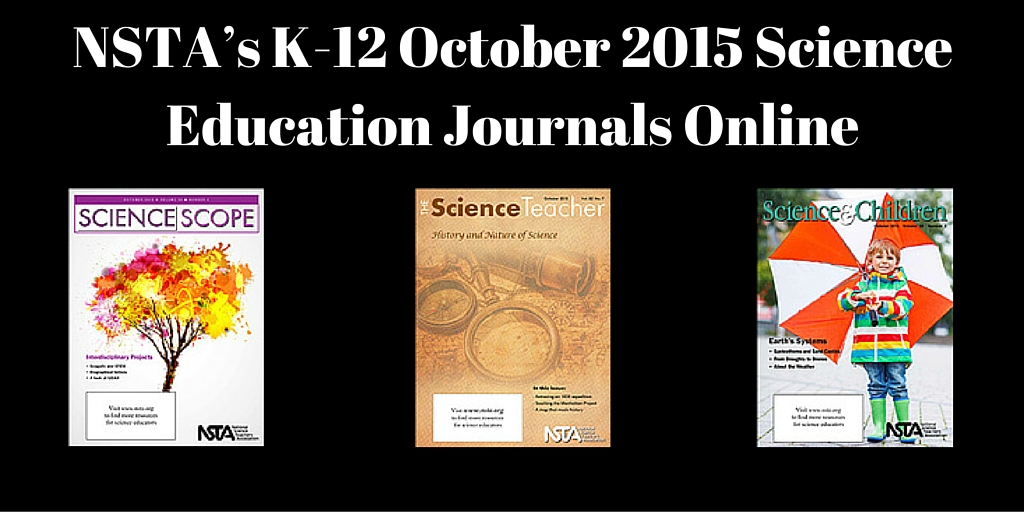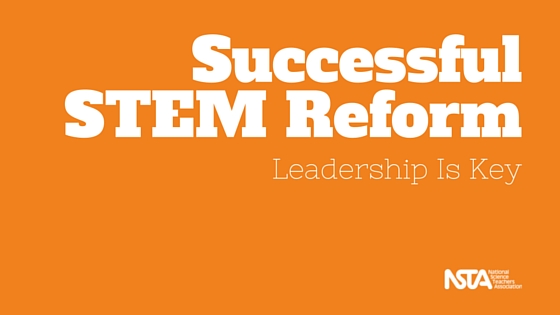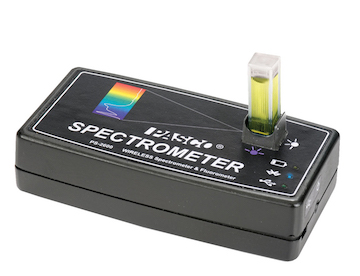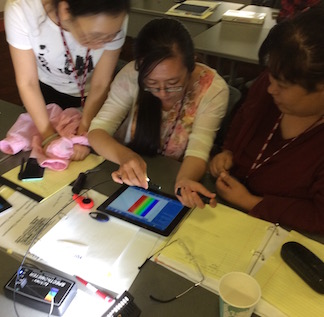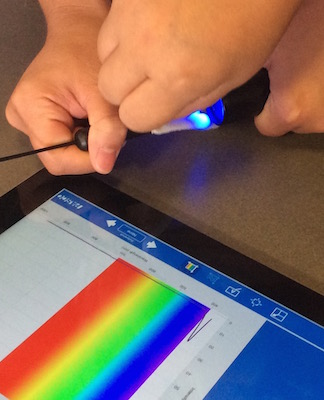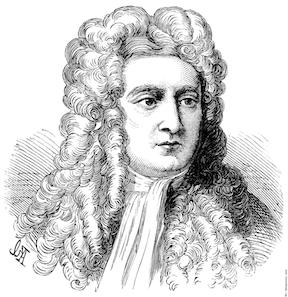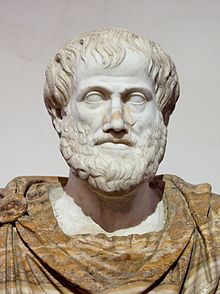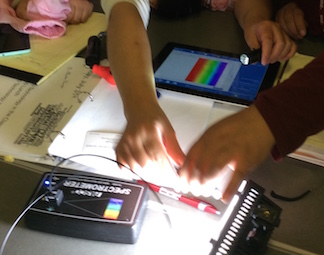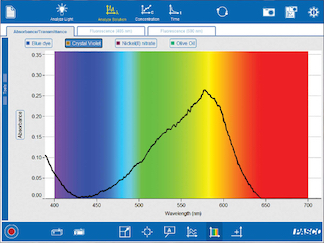Do You Know What You Do Not Know?
By Christine Royce
Posted on 2015-10-01
The recent report by the Pew Research Center was titled “A Look at What the Public Knows and Does Not Know About Science” and according to their website found “….. that most Americans can answer basic questions about several scientific terms and concepts, such as the layers of the Earth and the elements needed to make nuclear energy. But other science-related terms and applications, such as what property of a sound wave determines loudness and the effect of higher altitudes on cooking time, are not as well understood.
There is no doubt that American’s or at least American students have been compared to international counterparts on a variety of different assessments throughout the ages. However, this particular study is a bit different in that it takes twelve questions – one per science topic and utilizes it to measure the public’s knowledge about science in general.
As noted in this month’s edition of the Leaders Letter, popular news media outlets picked up this story as well and Live Science summarized the findings in a short and to the point story. A counter point to this study appeared in Science News where it states that the study was “heavy on trivia and light on concepts” and is worth reading for a balanced view on this now trending on social media report on American’s understanding of science.
So, a better question is, do you know what you do not know? Or better yet…. do you know what your students do not know or have misconceptions about?
There are a variety of resources that help teachers tackle common (or not so common) misconceptions in science and some of these include:
- Understanding Science and How It Really Works
- Common Elementary Student Misconceptions in Science
- Uncovering Student Ideas Series from NSTA Press
- Picturing to Learn
Some groups even help you develop your own assessment to test student’s misconceptions:
As an educator or those who work with professional development opportunities, it may be worthwhile to actually test your own conceptual knowledge or build that into an actual PD event utilizing the professional development indexer which is part of the NSTA Learning Center. The Professional Development Indexer helps you diagnose your needs in specific science content areas and provide suggestions of NSTA e-PD resources and opportunities you may want to consider as you plan your professional development (PD). The Indexer does not assign a grade or present a score to the questions you answer, but saves a list of recommended resources for later review.
So how do you address what you don’t know or work to address what student misconceptions are?
The recent report by the Pew Research Center was titled “A Look at What the Public Knows and Does Not Know About Science” and according to their website found “….. that most Americans can answer basic questions about several scientific terms and concepts, such as the layers of the Earth and the elements needed to make nuclear energy.
Documenting weather changes
By Peggy Ashbrook
Posted on 2015-10-01
 As the wind stirs up and we get a full day of long-awaited rain, children arrive at school in rain boots and coats, and a few in soaking wet sandals. Hurricane Joaquin will bring more rain and wind this weekend as it moves north in the Atlantic, hopefully off the coast not inland.
As the wind stirs up and we get a full day of long-awaited rain, children arrive at school in rain boots and coats, and a few in soaking wet sandals. Hurricane Joaquin will bring more rain and wind this weekend as it moves north in the Atlantic, hopefully off the coast not inland.
Taking young children outside to observe the short-term conditions of the atmosphere—weather—is a foundation for later learning about the average daily weather for an extended period of time at that location—climate—as defined by the National Ocean Service of the National Oceanic and Atmospheric Administration.
Visit the National Weather Service’s JetStream: Online School for Weather page and scroll down to see the Köppen climates map. The continental USA has ranges in normal temperatures and amounts of precipitation, so no single lesson plan on weather observations 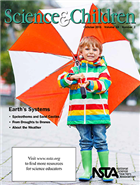 will be a good fit for all. Teaching about your local weather will provide the most opportunities for direct observation that can deepen children’s understanding about weather.
will be a good fit for all. Teaching about your local weather will provide the most opportunities for direct observation that can deepen children’s understanding about weather.
In the October 2015 issue of Science and Children I wrote about children counting and graphing the number of short sleeve shirts, sweaters and jackets that classmates wore to school each day. The clothing is a symbol for the weather, and observing changing trends in outerwear is a focused way to track changes in the immense phenomena that is weather.
NSTA’s K-12 October 2015 Science Education Journals Online
By Korei Martin
Posted on 2015-10-01
Looking for ways to talk about climate change with your students? Are your students curious about the nature of science? Want to know how to create interdisciplinary lessons connected to real-world applications? The October K–12 journals from the National Science Teachers Association (NSTA) have the answers you need. Written by science teachers for science teachers, these peer-reviewed journals are targeted to your teaching level and are packed with lesson plans, expert advice, and ideas for using whatever time/space you have available. Browse the October issues; they are online (see below), in members’ mailboxes, and ready to inspire teachers!
Science and Children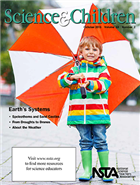
Our rapidly changing climate increases the need for even our youngest students to have a strong background in this area of science. This issue of S&C will help you teach your students about Earth’s systems, with a particular focus on climate.
Featured articles (please note, only those marked “free” are available to nonmembers without a fee):
- Free – Speleothems and Sand Castles
- From Droughts to Drones
- Animal Detectives
- NGSS in Action
- Free – Editor’s Note: Earth’s Systems: Climate
- Free – DCIs, SEPs, and CCs, Oh My!
- Teaching Through Trade Books: Wonderful Water
- Full Table Contents
Science Scope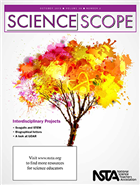
Although middle level science classes often seem self-contained to students, scientific disciplines—and the scientific field at large—do not exist in isolation. The articles in this issue of Science Scope will show you how to collaborate with other science and content-area teachers to create interdisciplinary lessons connected to real-world applications.
- Free – See Less Sea-Less Seagulls: Planning for an Interdisciplinary STEM Unit
- Shrimp and Black Gill: Studying the Effect of Apostome Ciliates
- Free – DCIs, SEPs, and CCs, Oh My! Understanding the Three Dimensions of the NGSS
- Connecting the Dots: Lasers Link Students to Their 3-D World
- Using Biographical Letters to Draw on the Nature of Science
- Using a STEM-Based Approach to Make Recycling Metallic Elements Relevant
- Free – Editor’s Roundtable: Interdisciplinary Teaching
- Full Table of Contents
The Science Teacher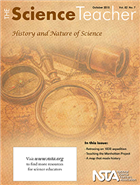
Learning about the nature of science (NOS) is certainly as important as learning about scientific laws and theories. In this increasingly scientific and technological age, personal and societal decisions require a clear understanding of scientific knowledge and how it is generated. NOS tenets need to be intentionally targeted in classroom activities and laboratory investigations and incorporated into all our science teaching. Using case studies from the history of science can help develop students’ understanding of the nature of science and the diverse individuals practicing science and engineering today, as articles featured in this issue illustrate.
Featured articles (please note, only those marked “free” are available to nonmembers without a fee):
- Free – Teaching the Manhattan Project
- William Smith’s Mapping Milestone
- Chemical Solitaire
- A Cool Controversy
- Are We Alone in the Universe?
- Free – DCIs, SEPs, and CCs, Oh My! Understanding the Three Dimensions of the NGSS
- Free – Editor’s Corner: The Nature of Science
- Full Table of Contents
Get these journals in your mailbox as well as your inbox—become an NSTA member!
The mission of NSTA is to promote excellence and innovation in science teaching and learning for all.
Follow NSTA
Build Your Professional Network
By sstuckey
Posted on 2015-10-01
In this video, columnist Ben Smith shares information from the Science 2.0 column, “Build Your Professional Network,” that appeared in a recent issue of The Science Teacher. Read the article here: Build Your Professional Network
[youtube]https://www.youtube.com/watch?v=bxgIKB6WIuM&list=PL2pHc_BEFW2LU1a1jgiLNu4NABGw1Zx-Y&index=66[/youtube]
In this video, columnist Ben Smith shares information from the Science 2.0 column, “Build Your Professional Network,” that appeared in a recent issue of The Science Teacher. Read the article here: Build Your Professional Network
[youtube]https://www.youtube.com/watch?v=bxgIKB6WIuM&list=PL2pHc_BEFW2LU1a1jgiLNu4NABGw1Zx-Y&index=66[/youtube]
Successful STEM Reform: Leadership Is Key
By Guest Blogger
Posted on 2015-09-30
A recent Education Week blog post entitled “STEM Reforms in Needy Schools Eroded Quickly” painted a disappointing picture of STEM education reform. In this post, part 1 of a 2-part series* from the National Science Teachers Association (NSTA), Dr. Cary Sneider (Associate Research Professor at Portland State University in Portland, Oregon) responds.
Schools have a great deal of momentum. They are very difficult to change—especially if just one part of the system is changed without taking into account interactions with other parts of the system. Approving systemic changes to accommodate STEM reform takes political will and therefore support from top educational leaders. Although I don’t know the details of these particular schools, support from top leaders may be a common thread for the problems identified in the report. For example:
Schedule conflicts: The report mentioned scheduling nightmares when guidance counselors tried to fit new STEM courses into existing core requirements. It seems obvious that it would not be possible to incorporate new STEM courses without appropriate modifications to core requirements. The root cause of such a conflict must lie with the people who make policy decisions. If they support STEM reform then they will change the rules to allow it; if they don’t they will block the necessary changes.
State accountability tests: We set an impossible goal when we ask teachers to implement new teaching methods with new goals, and hold them accountable for their students to perform at a high level on the old assessments. New performance-based assessments, consistent with new STEM standards have not yet been developed in any state, and until they are educational leaders should not use inappropriate measures to judge teachers and students.
Personnel changes: The report mentions that courses like physiology and robotics were advertised to students and never actually offered. There could be many reasons why such problems occur (or in this case didn’t occur,) but whatever the reason, teachers were not in a position to offer those courses. Since the deployment of staff to teach various courses is a function of administration, it is likely that these courses did not have sufficient support from the top.
Successful STEM reform addresses these issues from the start. Sneider will be discussing the systemic approach required for educational change on November 7 in the NSTA Virtual Conference Shifting to Integrated STEM: Experiences of Three School Districts. Sneider explains that changing educational systems requires a willingness to examine—and if necessary change—existing policies. He and his co-presenters will give several examples in which systemic changes have brought about significant improvements in STEM teaching and learning. They will also discuss what it takes to implement such changes, including the absolute requirement of support by top leaders. Learn more and register. Register early by Friday, October 9, and save $10 off your registration fee: Use promo code NOV_SAVE10.
 Dr. Cary Sneider is Associate Research Professor at Portland State University in Portland, Oregon, where he teaches courses in research methodology in a Master of Science Teaching degree program.
Dr. Cary Sneider is Associate Research Professor at Portland State University in Portland, Oregon, where he teaches courses in research methodology in a Master of Science Teaching degree program.
Read Part 2 of this series: 3 Key Ingredients for Successful STEM Implementation: Trust, Collaboration, and Innovative Thinking
The mission of NSTA is to promote excellence and innovation in science teaching and learning for all.
Follow NSTA
The PASCO Bluetooth Spectrometer: Even Isaac Newton would flip over the power of this digital prism!
By Martin Horejsi
Posted on 2015-09-30
enty of room left over to inspect rarely explored specimens of light scattered throughout our lives.
- Absorbance and transmittance spectra
- Beer’s Law: concentration and absorbance
- Kinetics
- Fluorescence
- Photosynthesis with DPIP
- Absorption spectra of plant pigments
- Concentration of proteins in solution
- Rate of enzyme-catalyzed reactions
- Growth of cell cultures
- Light intensity across the visible spectrum
- Emission spectra of light sources
- Match known spectra with references
The "E" in STEM
By Peggy Ashbrook
Posted on 2015-09-29
 Teaching a “STEM” class or curriculum means addressing each letter in the acronym. In a rigorous STEM curriculum, those four areas of teaching and student learning—Science, Technology, Engineering and Mathematics—will be observable every day.
Teaching a “STEM” class or curriculum means addressing each letter in the acronym. In a rigorous STEM curriculum, those four areas of teaching and student learning—Science, Technology, Engineering and Mathematics—will be observable every day.
Technology
The technology piece may be the easiest to incorporate because the technologies for writing and drawing have been staples in teaching young children for a long time. Children document their observations and thinking with their drawings and writing. Some programs fully integrate newer technologies such as cameras, computers, and easily portable devices for recording and documenting. “Technology and Interactive Media as Tools in Early Childhood Programs Serving Children from Birth through Age 8,” is a joint position statement issued by the National Association for the Education of Young Children (NAEYC) and the Fred Rogers Center for Early Learning and Children’s Media at Saint Vincent College.
Mathematics
Early Childhood Mathematics: Promoting Good Beginnings, the 2010 joint position statement of the National Association for the Education of Young Children (NAEYC) and the National Council of Teachers of Mathematics (NCTM), describes high quality mathematics education.
Science
The National Science Teachers Association’s (NSTA) position statement on Early Childhood Science Education was endorsed by NAEYC in 2014. The principals and declarations clarify how to teach science concepts and topics.
Engineering
Early childhood teachers need professional development to prepare to teach engineering concepts. The American Society for Engineering Education describes professional development that addresses the fundamental nature, content and practices of engineering.
Guides such as STEM Sprouts Teaching Guide by the Boston Children’s Museum and the MA Board of Education’s Guidelines for Preschool Learning Experiences provide direction for intentionally including engineering teaching.
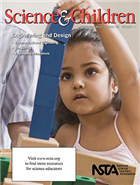 Learn how preschool teachers in Hartford, Connecticut implemented a unit on the topic of Building Structures (Chalufour and Worth 2004) in mixed-age classrooms of three-, four-, and five-year-old students, in “Gimme an E! Seven strategies for supporting the “E” in young children’s STEM learning” by Cynthia Hoisington and Jeff Winokur. This article in the September 2015 Science and Children describes how instructors and coaches in the professional development program Cultivating Young Scientists facilitated teachers’ preparation of the environment by planning space, materials, and time for building explorations. Hoisington and Winokur emphasize that preschool teachers need opportunities to participate in and reflect on their own collaborative building explorations. So grab a set of blocks, try building a tower and then reflect on how to build a better tower. Write some productive prompts to use when children build structures, to invite them to raise questions, and identify, address, and solve building challenges.
Learn how preschool teachers in Hartford, Connecticut implemented a unit on the topic of Building Structures (Chalufour and Worth 2004) in mixed-age classrooms of three-, four-, and five-year-old students, in “Gimme an E! Seven strategies for supporting the “E” in young children’s STEM learning” by Cynthia Hoisington and Jeff Winokur. This article in the September 2015 Science and Children describes how instructors and coaches in the professional development program Cultivating Young Scientists facilitated teachers’ preparation of the environment by planning space, materials, and time for building explorations. Hoisington and Winokur emphasize that preschool teachers need opportunities to participate in and reflect on their own collaborative building explorations. So grab a set of blocks, try building a tower and then reflect on how to build a better tower. Write some productive prompts to use when children build structures, to invite them to raise questions, and identify, address, and solve building challenges.



